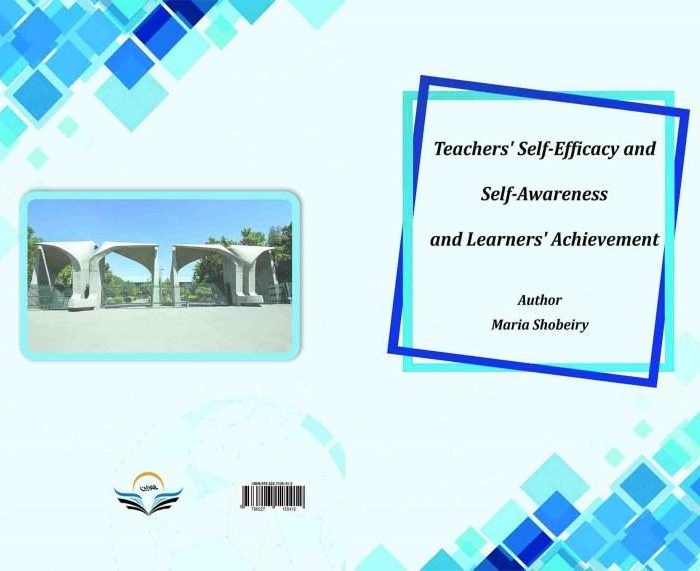کتاب A Comparative Study on the Effect of Natural and Audio-lingual based Instructions on Iranian EFL Young Learners’ English Proficiency
- صفحه نخست
- رشته ها
- ادبیات و زبان های خارجی
- زبان انگلیسی
- کتاب A Comparative Study on the Effect of Natural and Audio-lingual based Instructions on Iranian EFL Young Learners’ English Proficiency
کتاب A Comparative Study on the Effect of Natural and Audio-lingual based Instructions on Iranian EFL Young Learners’ English Proficiency
۳۱۲,۰۰۰ تومان قیمت اصلی: ۳۱۲,۰۰۰ تومان بود.۱۸۲,۵۲۰ تومانقیمت فعلی: ۱۸۲,۵۲۰ تومان.
| تعداد صفحات | 104 |
|---|---|
| شابک | 978-622-378-306-7 |
| انتشارات | |
| انتشار | توقف |

📚 کتاب “مطالعه تطبیقی اثر روشهای طبیعی و آوایی-زبانی بر سطح مهارت زبان انگلیسی یادگیرندگان جوان ایرانی EFL”
مقدمه
این کتاب یک مطالعه تطبیقی درباره اثرات روش طبیعی و روش آوایی-زبانی (ALM) بر مهارت زبان انگلیسی یادگیرندگان جوان ایرانی است. پژوهش حاضر به بررسی نحوه تأثیرگذاری این دو روش تدریس بر جنبههای مختلف یادگیری زبان، از جمله یادگیری واژگان، مهارتهای ارتباطی و انگیزه دانشآموزان میپردازد.
فصل 1: روش آوایی-زبانی 🎧
مفاهیم عمومی روش آوایی-زبانی
این فصل معرفی میکند که روش آوایی-زبانی (ALM) به عنوان یک تکنیک تدریس برجسته که بر مهارتهای گفتاری و تمرینات تکراری تأکید دارد، چگونه زبانآموزان را به یادگیری زبان هدایت میکند.
اصول پایه روش آوایی-زبانی
در این بخش اصول اصلی روش آوایی-زبانی بررسی میشود، از جمله شکلگیری عادتها، الگوهای گفتاری و واکنشهای خودکار.
تئوری زبان و یادگیری
در این بخش به بررسی تئوریهای زبانی و روانشناختی که پشت این روش قرار دارند پرداخته میشود، از جمله تأکید آن بر رفتارگرایی و الگوهای محرک-پاسخ.
تکنیکها و مطالعات انجامشده در مورد ALM
در این بخش تکنیکهای مختلف مورد استفاده در ALM مانند حفظ دیالوگها و بازیهای نقش معرفی میشود و مطالعاتی که اثربخشی آن را در یادگیری زبان مورد بررسی قرار دادهاند.
فصل 2: روش طبیعی 🌱
مفاهیم عمومی روش طبیعی
روش طبیعی که توسط کراسِن معرفی شده، بر ورودی قابل فهم و یادگیری طبیعی زبان بدون آموزش دستوری اجباری تأکید دارد.
اصول پایه روش طبیعی
این بخش به بررسی اصول پایه روش طبیعی میپردازد که به این باور است که یادگیری زبان باید به شکلی شبیه یادگیری زبان اول کودکان صورت گیرد.
تئوری زبان و یادگیری
در این قسمت، به بررسی فرضیه ورودی کراسِن و تأثیر انگیزه و عوامل احساسی در یادگیری زبان پرداخته میشود.
انتقادات به تئوری کراسِن
انتقادات و محدودیتهای تئوریهای کراسِن در زمینه یادگیری زبان، به ویژه در محیطهای آموزشی رسمی، مورد بررسی قرار میگیرد.
تکنیکهای مورد استفاده در روش طبیعی
در این بخش تکنیکهایی مانند بازیهای نقش، داستانگویی تعاملی و قرارگیری در معرض زبان واقعی معرفی میشود.
فصل 3: نقش انگیزه در یادگیری زبان 💡
یادگیری واژگان
چگونگی تأثیر انگیزه بر یادگیری واژگان و چگونگی تأثیر آن بر مشارکت فعال در فرآیند یادگیری زبان بررسی میشود.
فصل 4: شایستگی ارتباطی و آموزش زبان ارتباطی 🗣️
مفهوم شایستگی ارتباطی هایمز
در این فصل به بررسی مفهوم شایستگی ارتباطی، که بر توانایی استفاده از زبان در موقعیتهای اجتماعی مختلف تأکید دارد، پرداخته میشود.
مفهوم آموزش زبان ارتباطی ویدووسن
این بخش به طور کامل به آموزش زبان ارتباطی (CLT) و ارتباط آن با ALM و روش طبیعی پرداخته میشود.
چارچوب نظری شایستگی ارتباطی
این بخش به چارچوب نظری شایستگی ارتباطی و کاربردهای آن در تدریس زبان پرداخته میشود.
فصل 5: روششناسی 🔬
پژوهش انجامشده
این بخش به بررسی طرح تحقیقاتی، رویکرد روششناختی و ابزارهای مورد استفاده برای ارزیابی اثرات دو روش تدریس بر یادگیرندگان جوان پرداخته میشود.
فصل 6: تحلیل دادهها و نتایج 📊
اثر روشها بر یادگیری واژگان
در این بخش، مقایسهای بین نحوه تأثیرگذاری ALM و روش طبیعی بر یادگیری واژگان انجام میشود.
اثر روشها بر مهارتهای ارتباطی
این بخش به بررسی تأثیرات هر روش بر توانایی ارتباطی زبانآموزان در زبان انگلیسی پرداخته میشود.
اثر روشها بر انگیزه یادگیرندگان جوان
در این بخش، به بررسی چگونگی تأثیر هر یک از این روشها بر انگیزه دانشآموزان برای یادگیری زبان پرداخته میشود.
نظرات معلمان و والدین
این بخش به بررسی تصورات معلمان و والدین در مورد اثربخشی هر روش در یادگیری زبان پرداخته است.
فصل 7: بحث، نتایج و نتیجهگیری 🎯
خلاصهای از یافتهها
این بخش به خلاصهی یافتههای تحقیق و تأثیرات آنها در زمینه آموزش زبان انگلیسی میپردازد.
بحث در مورد فرضیههای تحقیق
در این بخش، فرضیههای تحقیق و اعتبار آنها بر اساس دادههای جمعآوریشده مورد بحث قرار میگیرد.
منابع 📑
در این بخش، منابع و ارجاعات معتبر استفادهشده در طول تحقیق ذکر شده است.
چرا این کتاب مهم است؟
این کتاب یک منبع ضروری برای معلمان، زبانشناسان و پژوهشگران آموزشی است که به دنبال درک تأثیر روشهای تدریس مختلف بر یادگیری زبان هستند. این مطالعه دیدگاههای مهمی در مورد نحوه تأثیر روش آوایی-زبانی و روش طبیعی بر مهارت زبانآموزان جوان ارائه میدهد و راهنماییهای عملی برای بهبود شیوههای تدریس در اختیار معلمان قرار میدهد.
اگر شما معلمی هستید که به دنبال اصلاح روشهای تدریس خود هستید یا دانشجویی که به فهم تئوریهای پشت فرآیند یادگیری زبان علاقه دارید، این کتاب به شما کمک خواهد کرد تا پیچیدگیهای آموزش زبان انگلیسی را بهتر درک کنید. 🌟
پرسش و پاسخ درباره کتاب “A Comparative Study on the Effect of Natural and Audio-lingual based Instructions on Iranian EFL Young Learners’ English Proficiency”
۱. موضوع اصلی کتاب چیست؟
✅ پاسخ: این کتاب به مقایسه روشهای آموزش زبان طبیعی و آموزش زبان با روش صوتی-زبانی (Audio-lingual) و تاثیر این روشها بر مهارتهای زبان انگلیسی کودکان ایرانی در آموزش زبان انگلیسی میپردازد. 🧠🌍
۲. فصل اول کتاب به چه موضوعاتی پرداخته است؟
✅ پاسخ: فصل اول به بررسی روش صوتی-زبانی (Audiolingual Method) میپردازد. در این فصل مفاهیم کلی، اصول و تئوریهای زبان و یادگیری مرتبط با این روش، تکنیکهای استفاده شده در این روش، و مطالعات انجام شده درباره آن بررسی میشود. 🎧📚
۳. فصل دوم کتاب به چه موضوعاتی اختصاص دارد؟
✅ پاسخ: فصل دوم به روش طبیعی (Natural Approach) و اصول آن پرداخته است. همچنین، نظریه زبان و نظریه یادگیری در این روش، انتقادها به نظریه کریشن و تکنیکهای استفادهشده در این رویکرد توضیح داده میشود. 🌱📘
۴. در فصل سوم، چه مباحثی مطرح شده است؟
✅ پاسخ: فصل سوم به نقش انگیزه در یادگیری زبان و همچنین یادگیری واژگان در زبانآموزان کودک پرداخته است. انگیزه میتواند بر سرعت و کیفیت یادگیری زبان اثرگذار باشد. 💡🔤
۵. در فصل چهارم، چه مفاهیمی مورد بررسی قرار گرفته است؟
✅ پاسخ: فصل چهارم به لیاقت ارتباطی (Communicative Competence) و آموزش زبان ارتباطی (Communicative Language Teaching) پرداخته است. در این فصل مفاهیم لیاقت ارتباطی و نظریات ویدوو سن و هایمز درباره تدریس زبان بررسی شده است. 🗣️📝
۶. فصل پنجم کتاب به چه مسائلی پرداخته است؟
✅ پاسخ: فصل پنجم به شرح روششناسی و جزئیات پژوهش انجامشده پرداخته است. این فصل شامل طرح تحقیقاتی، نحوه انتخاب نمونه و روشهای گردآوری دادههاست. 📊🔍
۷. فصل ششم به چه موضوعاتی اختصاص دارد؟
✅ پاسخ: در فصل ششم، تحلیل دادهها و نتایج تحقیق آورده شده است. این فصل به بررسی تاثیر روشهای تدریس بر یادگیری واژگان، مهارتهای ارتباطی و انگیزه زبانآموزان میپردازد. همچنین نظرات معلمان، والدین، و مدیران مدارس در خصوص هر یک از روشها جمعآوری شده است. 📈🤔
۸. یافتههای تحقیق در فصل ششم چه مواردی را شامل میشود؟
✅ پاسخ: یافتههای تحقیق نشاندهنده تاثیر روش تدریس بر یادگیری واژگان، مهارتهای ارتباطی و انگیزه زبانآموزان است. همچنین نظرات معلمان، والدین و مدیران مدارس در خصوص هر روش تدریس بررسی شده است. 👩🏫💬
۹. فصل هفتم چه نتیجهگیریهایی داشته است؟
✅ پاسخ: فصل هفتم به بحث، نتیجهگیری و کاربردهای پژوهش پرداخته است. این فصل به خلاصه نتایج تحقیق، بحث در مورد فرضیات پژوهش و پیشنهاداتی برای معلمان و مدارس در خصوص انتخاب روش تدریس مناسب برای زبانآموزان کودک پرداخته است. 📚💡
۱۰. این کتاب بیشتر برای چه افرادی مفید است؟
✅ پاسخ: این کتاب برای معلمان زبان انگلیسی، محققان آموزش زبان، و مدیران مدارس مفید است، بهویژه کسانی که در زمینه تدریس به زبانآموزان جوان فعالیت میکنند و به دنبال بهبود روشهای تدریس خود هستند. 🏫👨🏫
۱۱. این تحقیق چه اهمیت و کاربردی دارد؟
✅ پاسخ: این تحقیق به بررسی تاثیر دو روش تدریس صوتی-زبانی و طبیعی بر پیشرفت زبانآموزان جوان ایرانی پرداخته است. نتایج آن میتواند در انتخاب روشهای مناسب برای تدریس زبان انگلیسی به کودکان کمک کند و به بهبود کیفیت یادگیری زبان در مدارس ایران کمک نماید. 🗣️📈
۱۲. آیا نقدی بر روشهای بررسی شده در کتاب وارد است؟
✅ پاسخ: بله، در فصل دوم، نقدهایی بر نظریه کریشن و همچنین انتقادات به روش صوتی-زبانی وارد شده است. این نقدها بیشتر در زمینه انعطافپذیری کم این روشها برای یادگیری طبیعی زبان و فقدان تمرکز بر مهارتهای ارتباطی هستند. ⚖️📝
۱۳. چه نتایجی از این تحقیق برای معلمان میتوان گرفت؟
✅ پاسخ: نتایج این تحقیق نشان میدهد که معلمان میتوانند با استفاده از روشهای تعاملی و مبتنی بر انگیزه و توجه به یادگیری واژگان و مهارتهای ارتباطی زبانآموزان، فرآیند یادگیری را تسهیل کنند. همچنین توصیه میشود که روشهای تدریس بر اساس نیازهای زبانآموزان انتخاب شود. 📚🤝
| تعداد صفحات | 104 |
|---|---|
| شابک | 978-622-378-306-7 |
| انتشارات | |
| انتشار | توقف |
.فقط مشتریانی که این محصول را خریداری کرده اند و وارد سیستم شده اند میتوانند برای این محصول دیدگاه ارسال کنند.
محصولات مشابه
-
کتاب Linguistic Capital and Social Inequality A Sociological View of ELT
۲۷۶,۰۰۰ تومانقیمت اصلی: ۲۷۶,۰۰۰ تومان بود.۱۸۲,۱۶۰ تومانقیمت فعلی: ۱۸۲,۱۶۰ تومان. -
کتاب Teachers’ Self-Efficacy and Self-Awareness and Learners’ Achievement
۳۱۹,۲۸۶ تومانقیمت اصلی: ۳۱۹,۲۸۶ تومان بود.۱۸۳,۵۸۹ تومانقیمت فعلی: ۱۸۳,۵۸۹ تومان. -
کتاب When Tuba Wept
۳۹۰,۰۰۰ تومانقیمت اصلی: ۳۹۰,۰۰۰ تومان بود.۱۹۵,۰۰۰ تومانقیمت فعلی: ۱۹۵,۰۰۰ تومان. -
کتاب Intersemiotic Translation of Quatrains of Omar Khayyam
۲۹۷,۸۵۷ تومانقیمت اصلی: ۲۹۷,۸۵۷ تومان بود.۱۷۷,۲۲۶ تومانقیمت فعلی: ۱۷۷,۲۲۶ تومان.













دیدگاهها
هیچ دیدگاهی برای این محصول نوشته نشده است.